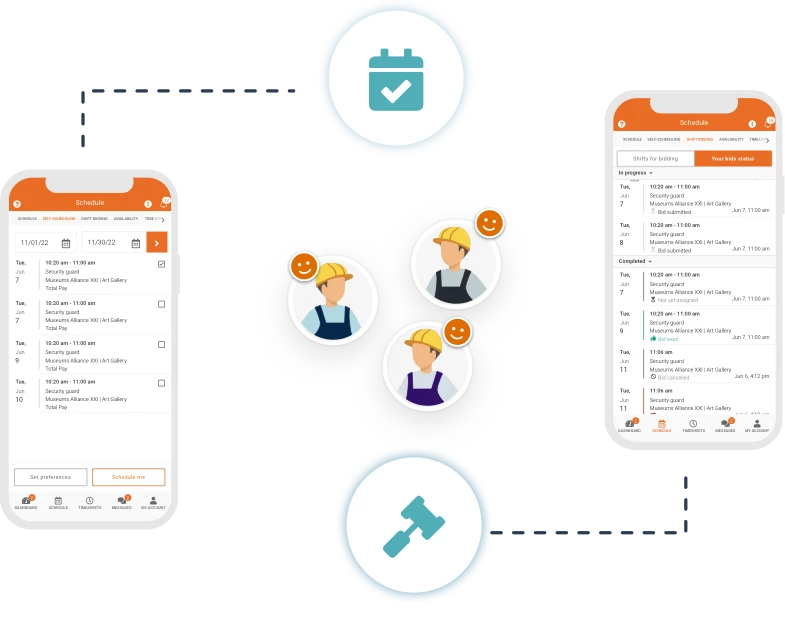Seasonal unemployment is an economic phenomenon that affects various industries and sectors worldwide. As the name suggests, this happens when the need for workers changes during the year. Seasonal factors like weather, holidays, and tourism cycles cause these changes.
Understanding it is crucial for business managers and workforce management professionals. It can help you to plan and implement strategies that minimize its impact on your operations.
Understanding Seasonal Unemployment

Seasonal unemployment is not something we see across all industries. Industries such as agriculture, tourism, and construction often experience seasonal variations in employment because of changes in weather conditions, consumer preferences, and other factors.
For example, a ski resort may need more workers in winter. However, it often sees a big drop in demand during summer. Consequently, many workers in these industries face periods of unemployment throughout the year.
The Impact of Seasonal Unemployment on Workforce Management
Seasonal unemployment can have a significant impact on workforce management, as it creates challenges in recruiting, retaining, and motivating employees. Some of these challenges include:
Recruitment & Retention
When businesses face seasonal unemployment, they often struggle to attract and retain qualified workers. The uncertainty of temporary employment may deter potential employees, and the constant need to hire and train new workers can be costly and time-consuming for businesses.
Take a restaurant for example, if employees know they will have reduced hours, or perhaps no hours at all between busy seasons, they are less likely to take a job there in the first place. Since there is no guarantee that they will be able to receive unemployment benefits, they may prefer to work in a more secure industry/location.
Employee Morale & Productivity

Seasonal unemployment can also impact employee morale and productivity. Workers facing temporary unemployment may feel uncertain about their job security and become disengaged, which can lead to a decrease in overall productivity.
Workforce Planning
Business managers must adapt their workforce planning strategies to account for seasonal unemployment. This includes accurately forecasting labor demand, developing appropriate staffing models, and implementing flexible scheduling practices.
Strategies to Mitigate the Impact of Seasonal Unemployment
To minimize the impact of seasonal unemployment on workforce management and business operations, managers can adopt the following strategies:
Flexible Work Arrangements

Implementing flexible work arrangements, such as part-time employment, job-sharing, or remote work, can help businesses retain valuable employees during periods of low demand. By offering these options, companies can maintain a stable and skilled workforce, reduce recruitment and training costs, and improve employee morale.
Cross Training & Skill Development
Investing in employee skill development and cross-training can help businesses reduce the impact on their workforce. IDEO CEO Tim Brown emphasises the importance of “T-Shaped” employees. These employees specialise in one area of their job, but still have a broad knowledge of all other parts! By training employees in multiple roles or skill sets, they become more versatile and valuable to the company, increasing their likelihood of being retained during periods of low demand.
Collaboration with Other Businesses
In some cases, businesses can collaborate with other companies in their industry or region to share employees during low seasons. This approach can help both businesses maintain a stable workforce while also providing employees with more consistent employment opportunities.
Government Support & Policy Measures
Governments can also play a role in mitigating the impact of seasonal unemployment by implementing various policy measures and support programs. These can include:
Unemployment Insurance
Providing unemployment insurance for workers affected can help alleviate financial stress and support workers during periods of joblessness.
Skills Training & Development Programs

Governments can invest in skills training and development programs to help workers affected by seasonal unemployment acquire new skills and improve their employability. This not only benefits the workers but also contributes to the overall economic growth of the region.
Job Placement Services
Public employment services can help match seasonal workers with available job opportunities in other industries or regions, reducing the duration of their unemployment.
Tax Incentives & Grants
Governments can offer tax incentives and grants to businesses that create stable employment opportunities for seasonal workers, encouraging companies to invest in workforce development and retention strategies.
Seasonal unemployment is a reality for many industries and businesses, and it poses significant challenges for workforce management and business managers. By understanding its impact and adopting strategies to mitigate it, businesses can maintain a stable and skilled workforce, enhance employee morale and productivity, and remain competitive in their respective industries.
Furthermore, governments play a crucial role in addressing these challenges through policy measures and support programs. Ultimately, a collaborative approach involving businesses, employees, and government agencies is essential to successfully manage and reduce the impact of seasonal unemployment on the workforce and the economy.




